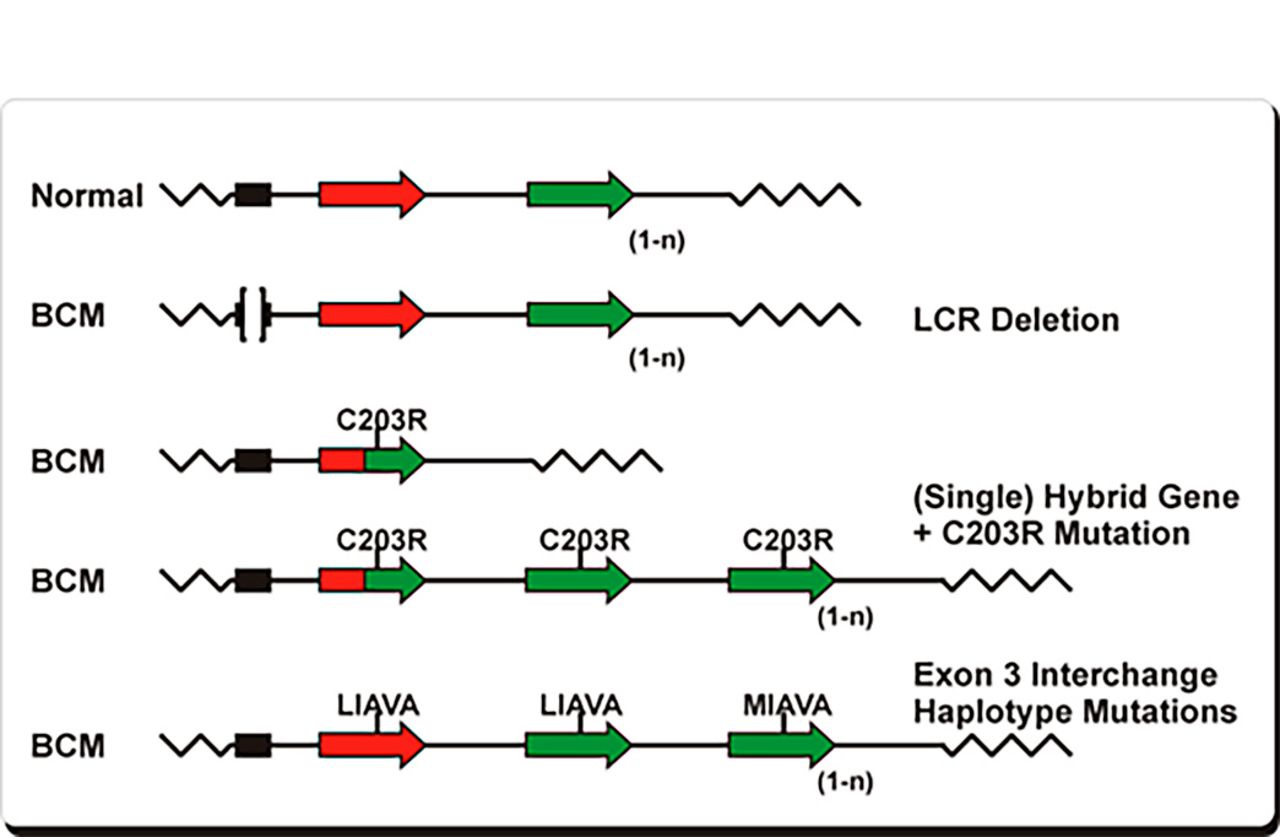Blue Cone Monochromacy
Blue Cone Monochromacy (BCM; MIM303700) is a rare X-linked recessive condition, which results from the simultaneous absence of both long-wavelength sensitive (LWS; red) and middle-wavelength sensitive (MWS; green) cone photoreceptor function in the retina. The frequency of BCM in the Western population has been estimated to be about 1:100.000. Clinically BCM patients are characterized by very poor or absent color discrimination, photophobia, severely reduced visual acuity, and nystagmus.
BCM is caused by mutations or structural aberrations in the genes encoding the LWS and MWS cone pigment genes that are arranged in form of a tandem array (opsin gene cluster) on the human X chromosome.
Our group studies the molecular genetic basis of BCM and the genetic mechanisms underlying the occurrence of mutations in the opsin gene cluster in individual patients and families as well as on the population level.
Main objectives of the project are:
- Development of sensitive and reliable methods for the detection of mutations and structural aberrations in the opsin gene cluster
- Development and maintenance of Standardized Operation Procedures for the genetic testing for BCM
- Reference center for the genetic research testing of clinically diagnosed BCM patients
- Provision of reference material for quality control in genetic testing for BCM
Determination of mutation origin and new mutation rates in the opsin gene cluster.
Project Details
| Involved Lab Members: | Bernd Wissinger, Susanne Kohl, Britta Baumann |
|---|---|
| Cooperation Partners: | Samuel G. Jacobson, Renata Sarno |
Our project is supported by the BCMFF.





